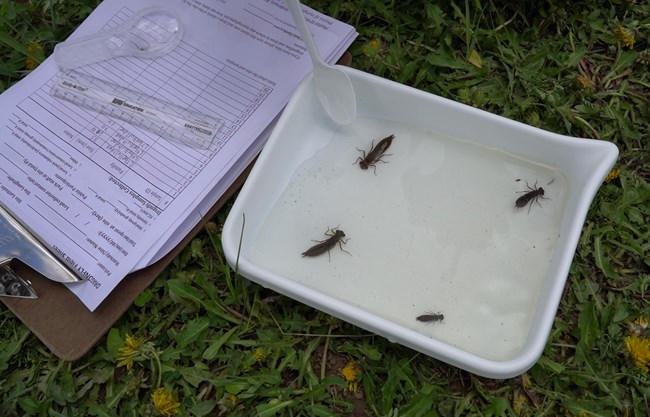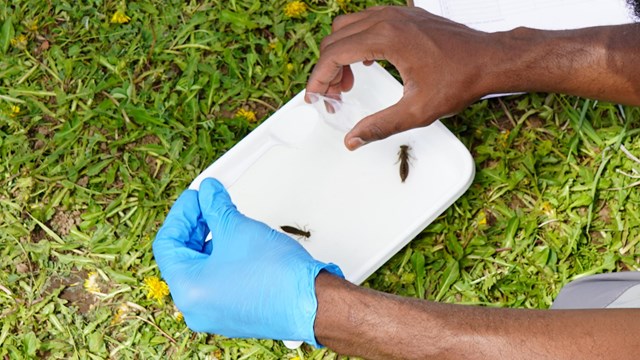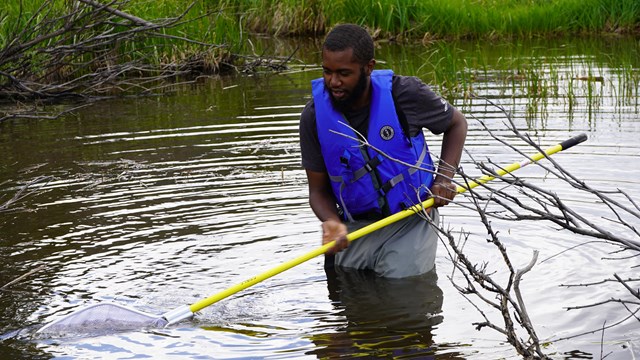
NPS
How much mercury is present in the water bodies of Rocky Mountain National Park (RMNP)? This is one question community scientists are currently helping to answer. Mercury is harmful to ecosystems, wildlife, and humans. Collecting and processing dragonfly larvae from water bodies is a great way to test mercury levels since larvae have long life cycles and act as bio-indicators of what is in the water, including mercury. The Continental Divide Research Learning Center (CDLRC) brought the nationwide Dragonfly Mercury Project (DMP) to RMNP in 2014 and maintains three long-term sites - Lily Lake, Sprague Lake and Holzwarth Ranch Pond. This Community Science program is conducted in partnership with the University of Maine and the U.S. Geological Survey (USGS).
CDRLC staff lead sampling events at the park and engage a wide variety of participants, including RMNP interns from a variety of programs such as Fish and Feathers, Mosaics in Science, Latino Heritage Internship Program and Rocky Mountain Conservancy, residential high-school students from Eagle Rock, and university students from Colorado State University and University of Colorado-Boulder. Participants become community scientists and contribute to better understanding the role dragonflies play as an indicator of mercury pollution

NPS
Learn more about the nationwide DMP by exploring the USGS Story Map.

NPS

Learn more about the Dragonfly Mercury Project in national parks across the U.S.

Learn more about Community Science projects at Rocky!
Last updated: September 18, 2024
